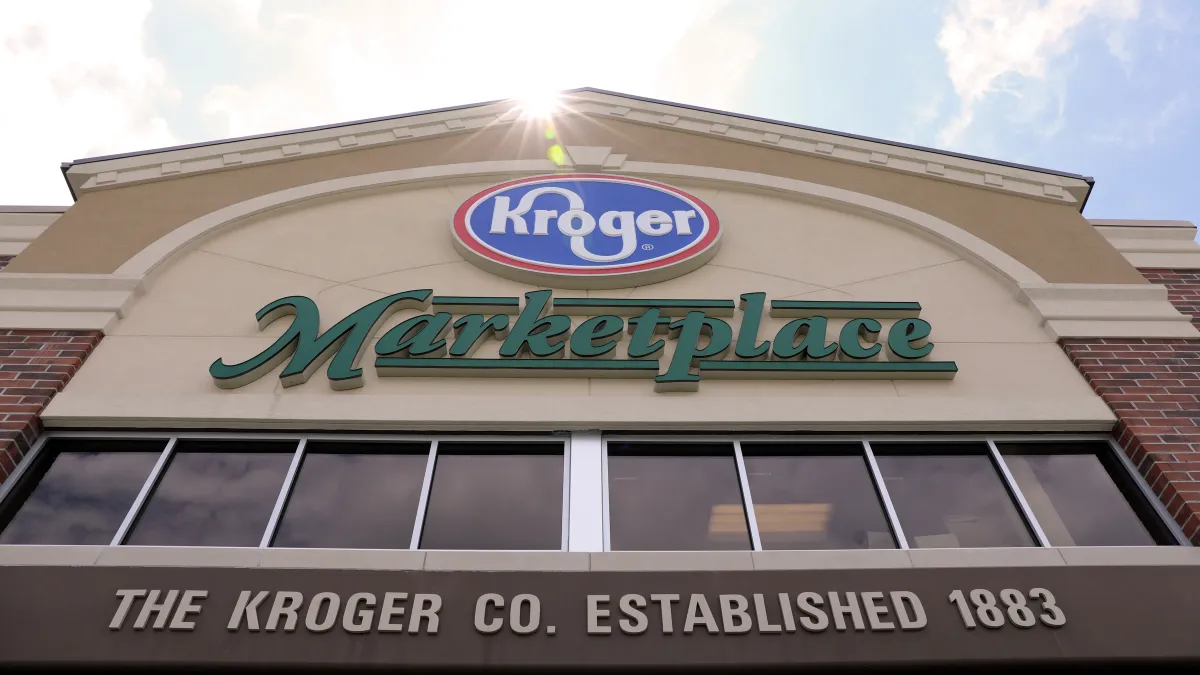Dive Brief:
- Kroger converted a store in Franklin, Tennessee, to self-checkout-only with plans to do the same at another store in the state, a spokesperson for the grocer said in a Thursday email.
- The grocer is planning to make its store in Hillsboro Village self-checkout-only later this year, said Lauren Bell, the spokesperson.
- With the switch at the two stores, Kroger is joining a list of retailers who have piloted self-checkout-only locations.
Dive Insight:
Kroger says the change at the Franklin store, located at 2020 Mallory Lane, is aimed at enhancing the customer experience instead of as a cost-cutting labor measure, noting that the store’s customers “were primarily already using self-checkout.”
“The improvements at this store include the addition of new belted checkout lanes to accommodate customers with larger baskets,” Bell wrote in the email.
Kroger associates are available to help customers scan and bag groceries, Bell said, noting that the change did not result in a reduction in labor and that the store is currently hiring new associates.
“Some titles have changed but we will continue to have staff at the front of the store,” Bell told News Channel 5 Nashville. Bell also told that outlet that the self-checkout-only model is just planned for these two locations.
In 2021, Kroger started testing a self-checkout-only store in Dallas — the grocer’s first test of the concept, per Bizwomen.
The grocer has also been testing other changes to its checkout experience. Last summer, Kroger started expanding high-tech self-scan checkout lanes, which resemble a full-service checkout lane but are self-service, to Cincinnati stores alongside the traditional checkout lanes, WCPO reported. In 2021, the grocer began testing KroGO branded smart carts by Caper at a Cincinnati store and also had a pilot with smart cart maker Veeve.
Other retailers, including Walmart and Dollar General, have also piloted self-checkout-only stores.
These tests are coming at a time when health and safety concerns, along with an increased focus on frictionless and faster shopping experiences, have accelerated the adoption of self-service and checkout-free purchasing options in stores. Self-checkout stations can also give retailers the option to reduce staffing.
At the end of 2022, self-checkout made up nearly half (48%) of all checkout registers, and that checkout method is now the dominant grocery checkout format, accounting for 55% of transactions in 2022, according to a VideoMining study released earlier this year.
A study from shopper intelligence firm Catalina last fall found that the number of self-checkout lanes in the U.S. has increased by 10% in the last five years and that they now make up 38% of the checkout lanes in grocery chains stateside. That firm, though, noted that consumers who use both self-checkout stations and staffed checkout lanes consistently have the highest retention rates and best customer value — indicating grocers may want to take a hybrid approach to their front ends.








